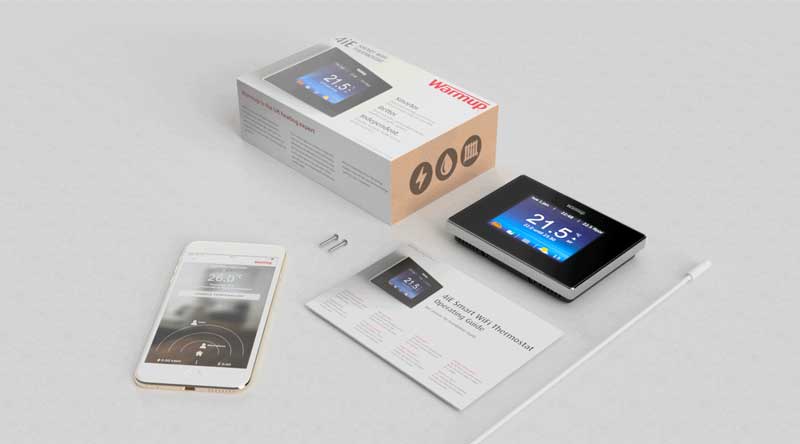Home
/
Programming
/
Terra WiFi Thermostat
How to set a floor limit on the Terra Smart WiFi thermostat?
If you are struggling to increase your Terra Smart WiFi thermostat temperature, your thermostat heating limits could be the reason why. We hope this video, or instructions below will help guide you through setting heating limits on your device:
How to Set a Floor Limit on your Terra Thermostat:
Different type of flooring have different heating limits. To ensure floor heating limits are not surpassed, a floor probe should be installed and wired to your thermostat. Generally speaking, a tile or concrete floor can be set to 104 degrees, while other types of flooring are typically limited to 86 degrees. If you are unsure about the heating limits of your flooring, refer to your flooring manufacturer.
You may find it easier to alter advanced settings for your Terra Thermostat via the MyHeating app or at my.warmup.com.
- To get started, press the check mark to accept.
- Use the arrows to move to the settings and press accept.
- Use the arrows to move to the thermostat application icon and press accept.

- 1 means Floor Sensor and 2 means Air Sensor
The thermometer icon represents the “control” sensor. The shield icon represents the “limit” sensor. If shown on your thermostat in this order, the control sensor is set to floor and the limit sensor is set to air. If reversed, the control sensor is set to air and the limit sensor is set to floor.
4. Use the arrows to move to the thermostat application icon and press accept.
-
- Refer to the chart below for the next step

5. Move to your preference and press accept.
6. Move to your temperature format preference and press accept.
7. If you are using the probe provided, move to 10K and press accept.
8. Next, use the arrows to set the air limit and press accept.
9. Use the arrows to set the floor limit and press accept.
10. Press back to return to the home screen.
If you have any other questions, please feel free to contact us or visit our YouTube channel for additional information.


![Thumbnail [200x250]](/wp-content/uploads/Indoor-Systems-Page-Image.png)
![Thumbnail [200x250]](/wp-content/uploads/image-13.png)
![Thumbnail [200x250]](/wp-content/uploads/Projects-Image.png)